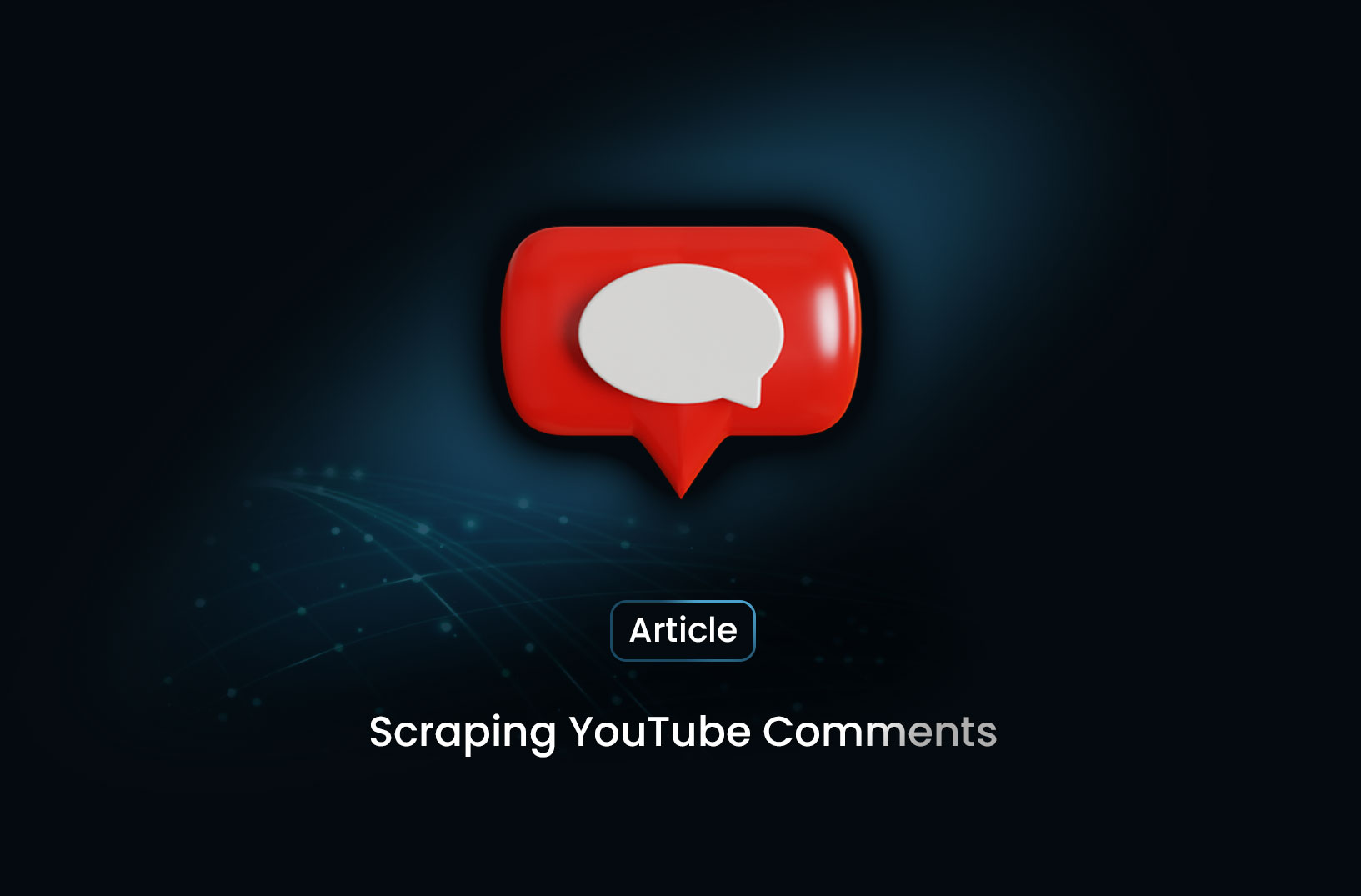
Scraping YouTube Comments for Real-Time Product Feedback
ArticleHow Web Scraping YouTube Comments Works, 1. Set Up Scraping Tools: Use programming languages like Python with libraries such as Selenium or BeautifulSoup, or specialized scraping tools. 2. Extract Comments: Automate the process of collecting comments, including text, timestamps, and user information. 3. Clean and Process Data: Remove spam, irrelevant comments, and prepare the data for analysis. 4. Analyze the Data: Use text analysis techniques to extract insights from the comments.
User feedback is more valuable than ever for product development. While traditional surveys and focus groups still have their place, savvy companies are turning to social media platforms like YouTube to gather real-time, unfiltered user opinions. By leveraging web scraping techniques to collect and analyze YouTube comments, businesses can gain invaluable insights to drive their product development process. Let's explore how this innovative approach is transforming the way companies iterate and improve their products.
The Power of YouTube Comments
YouTube is not just a video-sharing platform, it's a goldmine of user opinions, experiences, and suggestions. With over 2 billion logged-in monthly users, YouTube hosts a vast and diverse audience discussing products, sharing experiences, and offering feedback. This wealth of information can be a game-changer for product development teams when harnessed effectively.
Web Scraping: The Key to Unlocking YouTube's Potential
Web scraping is the automated process of extracting data from websites. When applied to YouTube comments, it allows companies to:
- Collect large volumes of user feedback quickly
- Gather real-time opinions as they're posted
- Access a diverse range of perspectives from a global audience
- Identify trends and patterns in user sentiment Visit MrScraper to learn more about how web scraping can benefit your business.
How Web Scraping YouTube Comments Works
Identify Relevant Videos: Select videos related to your product or industry.
- Set Up Scraping Tools: Use programming languages like Python with libraries such as Selenium or BeautifulSoup, or specialized scraping tools.
- Extract Comments: Automate the process of collecting comments, including text, timestamps, and user information.
- Clean and Process Data: Remove spam, irrelevant comments, and prepare the data for analysis.
- Analyze the Data: Use text analysis techniques to extract insights from the comments.
Integrating YouTube Feedback into the Product Lifecycle
Once you've collected and analyzed the YouTube comments, here's how you can integrate this feedback into your product development process:
- Idea Generation and Validation
- Use comments to identify pain points and unmet needs
- Validate product ideas based on user discussions
- Discover new feature suggestions from user comments
- Prototype and Testing Phase
- Gather initial reactions to product demos or teasers
- Identify potential issues or concerns early in the development process
- Refine prototypes based on user feedback
- Launch and Post-Launch Improvements
- Monitor real-time reactions to product launches
- Quickly address any issues or concerns raised by users
- Prioritize post-launch improvements based on user feedback
- Continuous Improvement
- Track sentiment over time to measure the impact of changes
- Identify emerging trends or shifts in user preferences
- Continuously refine and update products based on ongoing feedback
Best Practices for Scraping YouTube Comments
- Respect Privacy: Only collect publicly available data and anonymize user information.
- Follow YouTube's Terms of Service: Ensure your scraping activities comply with YouTube's policies.
- Use Ethical Scraping Techniques: Implement rate limiting to avoid overloading YouTube's servers.
- Combine with Other Data Sources: Use YouTube comments in conjunction with other feedback channels for a comprehensive view.
- Continuous Monitoring: Set up ongoing scraping to track sentiment and feedback over time.
Challenges and Considerations
While scraping YouTube comments can be incredibly valuable, there are some challenges to keep in mind:
- Data Quality: Comments may contain spam, irrelevant content, or biased opinions.
- Representative Sample: YouTube users may not represent your entire target market.
- Context: Comments may lack context or be influenced by the video content.
- Language and Cultural Barriers: Global comments may require translation and cultural interpretation.
The Future of YouTube Comment Scraping for Product Development
As AI and machine learning technologies advance, we can expect even more sophisticated analysis of YouTube comments:
- Sentiment Analysis: Advanced algorithms will provide nuanced understanding of user emotions.
- Predictive Modeling: AI could predict product success based on early comment patterns.
- Automated Responses: Systems could generate responses to common queries or concerns in real-time.
- Cross-Platform Integration: Combining YouTube data with other social media platforms for a holistic view of user sentiment.
Web scraping YouTube comments represents a powerful tool for product development teams looking to tap into the pulse of their user base. By leveraging this real-time, unfiltered feedback, companies can make data-driven decisions, iterate quickly, and develop products that truly resonate with their target audience. Check out MrScraper to get started.
Find more insights here

API Calls 101: Understanding How the Web Communicates
Learn what API calls are, how they work, and why they are essential for modern web and software syst...

Python: How to Add Items to a Dictionary
Learn how to add and update items in Python dictionaries using assignment, update(), setdefault(), l...

CreepJS: Browser Fingerprinting and What It Means for Scrapers
Learn what CreepJS is, how browser fingerprinting works, and why it matters for web scraping, automa...
